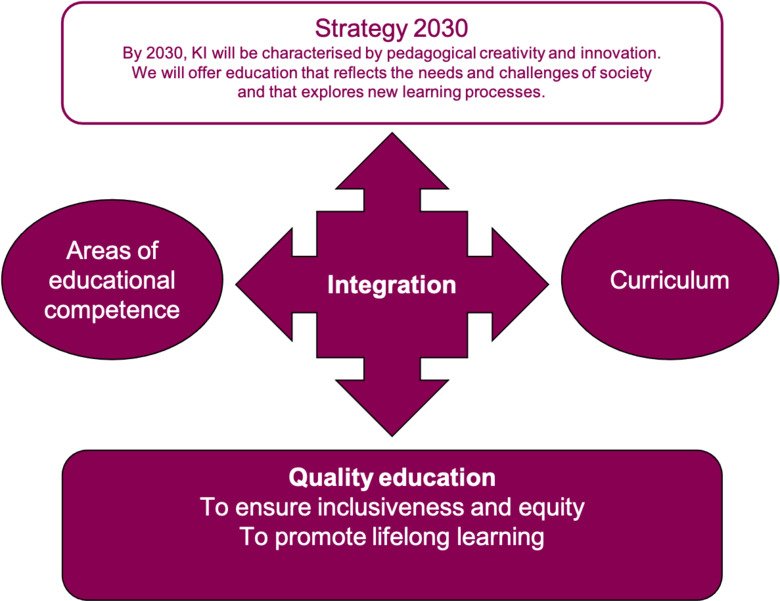How to make the Internationalisation of the Curriculum (IoC) process sustainable?
The partnership between educational developers, teachers, students, support staff and leaders carries forward the ambitions of KI Strategy 2030 for transformative practices. Working across institutional silos has accelerated the transition towards a more sustainable IoC.
From the onset, we were concerned with the sustainability of the IoC project. It was clear that the work and effort put into IoC by the pilot programmes and their teaching staff had to have a lasting impact on the way educational development was carried out at KI.
Dock into existing structures
It quickly became apparent that the IoC process, together with principles of constructive alignment and quality assurance systems could provide us with a sustainable process to deal with any current and future area of educational development. If we were able to dock into existing quality assurance structures, we could integrate other areas of educational development into everyday activities – thereby facilitating the process for study programmes and alleviating issues raised by conflicting agendas. IoC provided us with a unified process for educational development of teaching staff at KI for quality education.
A method for dealing with constant change
Since the IoC process is iterative, it should be performed at regular intervals and could incorporate other priority educational areas (in addition to internationalisation) and thus applied to more programmes over time. It must be noted that study programmes planning to redesign their curriculum present a unique opportunity for comprehensive action.
This systematic process will also enable new areas of educational development to be integrated in the future, and provide a sense of control to programme directors, course leaders and teachers since they decide their own action plans for each area of educational competence.

Curricular integration is the key
In this era of global citizenship, and within the framework of the Sustainable Development Goals, internationalisation of the curriculum offers an opportunity to reinforce its educational aspects in a holistic way.
For IoC to be effective, particular attention must be paid to internationalising learning outcomes, content, teaching and learning activities, and assessment tasks (Leask, 2015: 10).
IoC is thus a change process that requires imagination, creativity and innovation to transform teaching and learning. This process relies on the engagement of academic staff to take action in order to promote and implement change. The challenges teachers and educators face are tremendous:
To face the main challenges of our times – social inequality, extreme poverty, environmental deterioration, immigration, global citizenship – and make the transition from a culture of war to a culture of peace feasible, the world needs higher education of excellence that makes human beings free and responsible in order to reverse present trends.
To face the main challenges of our times – social inequality, extreme poverty, environmental deterioration, immigration, global citizenship – and make the transition from a culture of war to a culture of peace feasible, the world needs higher education of excellence that makes human beings free and responsible in order to reverse present trends.
This means that today's teaching staff need the competences to constantly change, innovate and adapt. In turn this demands critical, evidence-based attitudes enabling them to respond to new evidence from inside and outside the classroom, in order to alter their own practices appropriately.
By facilitating the process of integrating areas of educational competence in curricula, we may be able to ensure inclusive and equitable quality education, so that no one is left behind (United Nations 2015).

References
GUNi (Global University Network for Innovation). 2017. Higher Education in the World 6. Towards a Socially Responsible University: Balancing the Global with the Local. Girona: GUNi. (accessed 13 February 2020).
Leask, B. 2015. Internationalizing the Curriculum. New York: Routledge.
